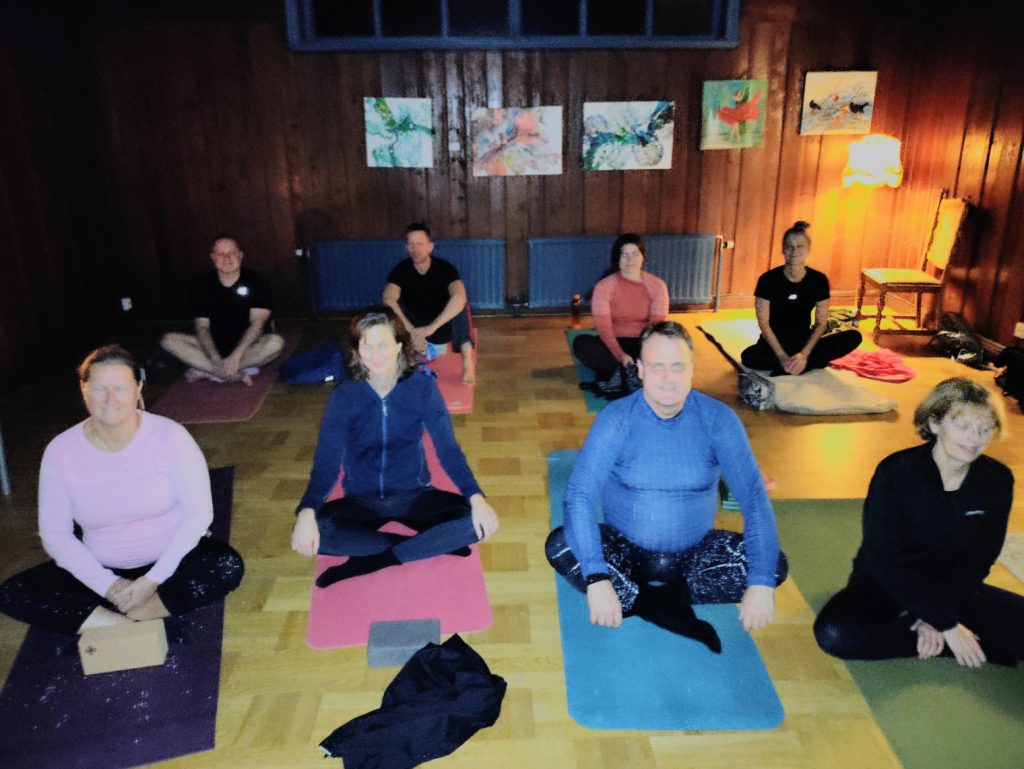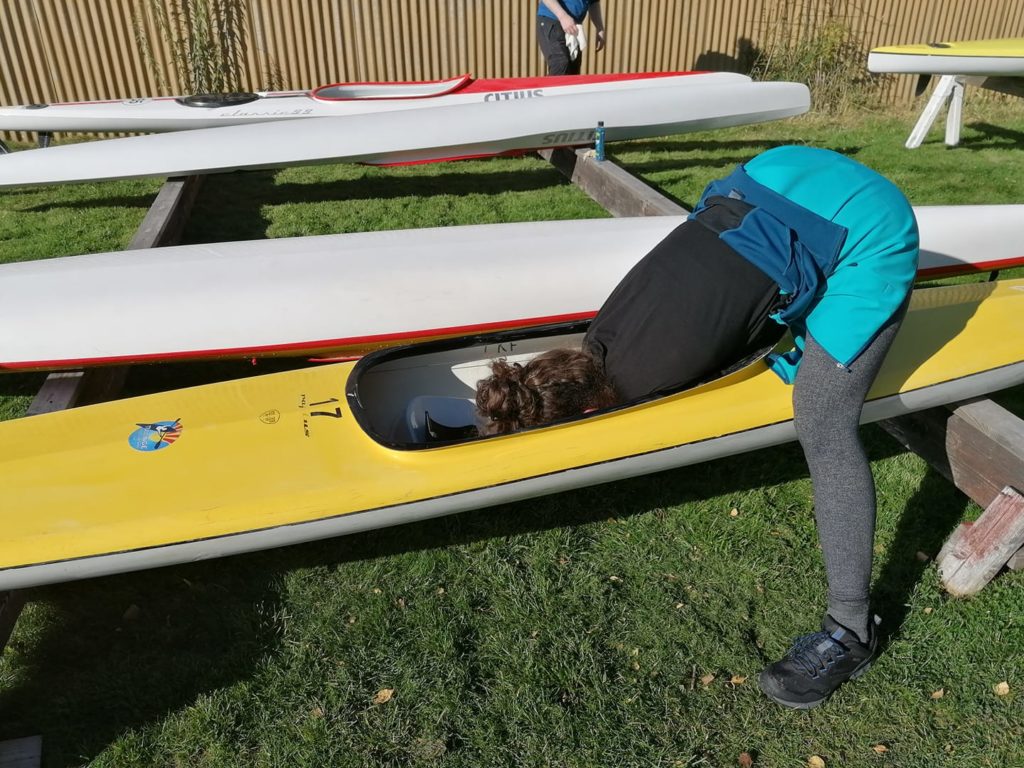
As great as it was, outdoor yoga on the dock wasn’t going to last forever. The last formal dock yoga with a big group was August 11 (there were 2-3 impromptu practices with a few people after that). Since then, a few people have been on the lookout for a good location. The municipality rents out school gymnasium, but there are so many basketball and indoor hockey leagues that the good weekday evening times get snapped up really quick. Luckily, this last week at the season-ender race I talked to some club members and yoga-fans about the slow-down, and they had some ideas. Over the course of a week I heard about a new spot, went to see it, and we finalized the contract within a week.

The new spot is Elgentorp (or PRO-huset) which you can see on Google maps as Palettvägen 15. It is about 10min bike ride from our house. Happily, our lanlords are charging very little, and the Canoe Club is paying the whole rental fee so this class is free to canoe club members!
As always, it is classical Ashtanga yoga in the lineage of Baba Hari Dass for all levels with encouragement to find one’s own options and modifications. We start with some breathing exercises (pranayama), explore physical postures (asana) with time to breathe in each one, and end with some meditation (savasana).
Our new room is mostly an empty space, so weneed to bring our own equipment as we did on the dock. Since the yoga is free, I am encouraging folks to invest in nice practice materials. In case you are thinking of getting yoga equipment for a home-based practice, I am reproducing my advice here.
Here is some equipment that I think would be nice to have, in order of importance:
- Yoga Mat (1) – this can be considered ‘essential’. A thick one will be more comfortable (a little heavier and takes more space to store). A natural rubber one is a little more ‘sticky’ and more stable since it prevents slipping
- Yoga blocks (2) – It would be ‘nice to have’ 2 to practice some supported poses. The foam ones are cheapest, the cork ones are the most stable. Most yoga blocks are 23cm x 15cm x 7.5cm. The thick ones are a little more stable, usually 23cm x 15cm x 10cm. You can also use blocks of wood that are the same size.
- Yoga strap (1) – For most things you can use a tie, a scarf, a belt, or the strap that wraps up your yoga mat. If you buy a specialty yoga strap, look for the longest length you can get with a buckle so that you can make a loop. This is the one I have.
- Bolster (?) – This could be considered a luxury item and best purchased after you know what you like. I have a small rectangle bolster that I brought from Canada. There are also round bolsters specifically for sitting that may also work for knees. It also works well to have a thick towel or firm cotton blanket to roll up.
- Yoga pads for knees (?) – Not required, but some people like these to add extra comfort under knees or elbows. You could ask to borrow someone else’s and see if you like them enough to buy yourself. Example pad from Decathlon.
- Savasana accessories (?) – Up to personal preference. Some people like to have an eye pillow, or soft scarf to cover the face. Many people like to have a sweater, scarf, warm socks, etc to put on so they stay warm and comfortable during savasana. If you had a rolled up blanket as a bolster, you could use it for savasana.
You do not need to start with the most fancy and expensive equipment. My suggestion would be to start small and then once you practice enough to know what you like and is important to your practice, you can invest in a version that has all the features you want.Â

Thanks for this great update Catherine!!!
Much appreciated, especially as someone who’s been out of touch for so long!!